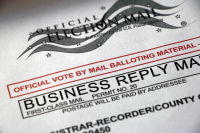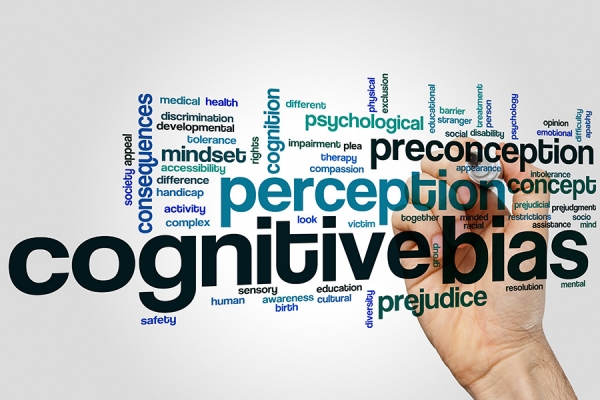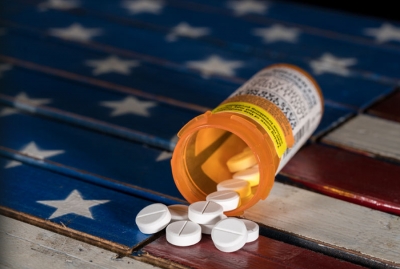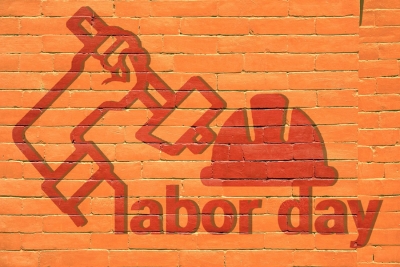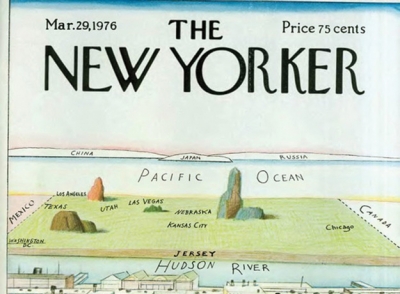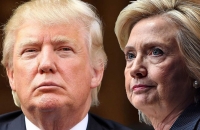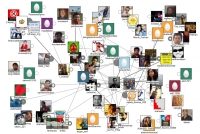Novato Republican Women
NRW Presents
Brad Dacus,
Founder, Pacific Justice Institute
May 21 2024
11:30 a.m.- 1:30 p.m.
-
The Novato Republican Welcome You
We believe that the principles of our party should be based upon the precepts of the founders of the United States Constitution and the Bill of Rights.
Read More -
'Biden Bucks' make 'Zuckerbucks' look like Chump Change
Election integrity watchdogs say private funds in elections pale in comparison to what Biden has wrought through the power of his pen.
Read More -
Oops. Stormy Daniels unequivocally stated in writing that the affair and "hush money" never happened.
Nonetheless, the Biden regime is hell-bent on unleashing the full force of the DOJ against its political adversaries, a move that will make North Korea blush.
Read More -
SOTU Flashback: When Reagan Showed Us What Real Political Leadership Is Like
Later this week we’ll both preview and review President Joe Biden’s State of the Union address. But in the meantime, we thought readers might want to reminisce about what politics… Read More -
Surprised? Most Americans Think They Pay Too Much In Taxes, But The Rich Not Enough: I&I/TIPP Poll
The richest 1% among us now earn 26% of all income but pay more than 45% of all taxes.
Read More -
Drain the Reservoirs, Return California’s Stolen Land
The logical extension of California’s environmentalist policies is to end civilization as we know it. But California’s progressive elites are not crazy or stupid. So what is their actual motivation?
Read More
- 1
- 2
- 3
- 4
- 5
- 6
- All
- Blog
- Latest News
- Default
- Title
- Date
- Random
Children categories

Special Events (2)
These are special events that are in addition to our regular events.

Latest News (319)
In foreign policy, Donald Trump is the powerful man Barack Obama never could be
As Saul Alinsky once said, “The issue is never the issue.” He meant that whatever issue Leftists appear to have in their sights is not their real focus; their real focus is power, and until they have absolute power, their immediate focus is revolution.
The more desperate Liberals get for power, the more controversial issues take center stage in politics and the news. Perhaps the most controversial issue of the post World War II era is abortion.
This article won’t attempt to change your views; rather it points out that the recent spate of states (New York, Rhode Island, Virginia) amending their constitutions or creating pro-abortion legislation is in reaction to the possibility that, if Justice Ginsberg dies and President Trump appoints another pro-life justice, Roe V. Wade could be overturned. New York and Virginia seek to overturn the 2003 federal law preventing partial birth abortion nationally. And Rhode Island is vacillating between one bill, preventing partial birth but allowing siblings over 25 and grandparents to approve abortions for minors, and The Rhode Island Reproductive Health Care Act which lifts all limitations, including partial birth.
Last year, Rhode Island’s Governor, Catholic Democrat Gina Raimondo, supported including pro-life insurance policies on the state’s Obama care exchanges (wpri.com); she met with a firestorm from the Left who turned against her and raised big money to support another Democrat candidate and unseat her. She won, but has radically changed her views to keep her political career alive.
In the State of the Union, President Trump said: “Lawmakers in New York cheered with delight upon the passage of legislation that would allow a baby to be ripped from the mother’s womb moments before birth…These are living, feeling, beautiful babies who will never get the chance to share their love and dreams with the world.”
What do his words really mean? 1) If viable full term babies can be killed on day one, what’s to prevent killing them the next day, or whenever suits a parent’s need? If a parent isn’t competent to choose, the state would get involved; then the state would determine who lives and dies, no matter the age; 2) therefore, the “beautiful babies” are all of us. If the Left wins their power grab, we may all lose our “chance to share [our] love and dreams.”
A recent CBS poll declared 76% of Americans approved of the president’s speech. According to a 2018 Gallup poll, 87% of Americans oppose late term abortions. The similarity of those numbers shows that most Democrats oppose late term abortion. Science has advanced since 1973, when Roe became law. Not only has medicine provided an array of contraceptives including the “day after pill,” but ultra sound and other advances show fetal development. Of babies born at 22 weeks 25% survive; 90% of those born at 27 weeks do. Only 59 countries allow abortion for any reason; more than half of those demand parental permission; only 6, including the US, allow abortion after the 22nd week. While science has yet to pinpoint the exact moment the soul enters the body; it has provided a clear picture of what’s possible with respect to bringing lives into the world.
With 5 children and 9 grandchildren, the president agrees with the 87 percent. And he knows that states rushing to pass abortion laws are not protecting women. By making late term the new standard, the Left further divides the nation by making abortion a black or white issue. It’s not enough for Americans to support abortion prior to 12 weeks, or 20 weeks, they’ve got to agree with it in any form, at any time, even after a healthy full term birth. To support these extremes, one must be so afraid that one is willing to hand over one’s rights to government - or be hungry for the kind of power that tyrannies provide.
Hunger for power explains why Virginia’s Democrat Governor Northam would include a joke KKK photo in his medical school yearbook, then 40 some years later chillingly support infanticide. His combined actions remind us that the Left brought us slavery and we become their slaves again if we hand over control of the right to life. This right extends beyond the maternity ward to our “inalienable rights” to “life, liberty and the pursuit of happiness.” In honor of our rights, it’s important that open-minded discussions on controversial topics continue; regarding abortion, we’re still debating the exact moment life begins. But that important truth is not the issue here. Because the issue is never the issue; the issue is power.
So, when President Trump declared his pro-life views during his recent State of the Union address, he was actually defending the liberty and rights of all Americans.
https://www.dailysignal.com/2019/02/05/democrats-radical-push-on-abortion-will-backfire/
https://news.gallup.com/poll/235469/trimesters-key-abortion-views.aspx
https://www.newsweek.com/babies-born-22-weeks-can-survive-medical-care-new-study-finds-329518
https://www.providencejournal.com/news/20180613/in-governors-race-abortion-dispute-flares-among-democrats
https://www.washingtonpost.com/news/fact-checker/wp/2017/10/09/is-the-united-states-one-of-seven-countries-that-allow-elective-abortions-after-20-weeks-of-pregnancy/?
noredirect=on&utm_term=.4c2dfa9e3c4e
https://www.wpri.com/politics/two-abortion-rights-bills-introduced-in-rhode-island/1706784477
The celebration of Labor Day as of the late 19th century, was meant to honor the contributions made by the labor movement to the prosperity of the United States. It evolved into a more general appreciation for the value and recognition of individual workers in America – those who continued to produce, build, harvest, and transport the goods Americans need. As of 1887, the holiday was observed nationally.
Unfortunately, the recession of 2008 and the subsequent recovery, exposed once and for all the profound shift in our perception of labor as of the late 20th century. We resigned ourselves to status of “service” nation, white collar, pushing higher education as the sole means to the attainment of meaningful employment. We witnessed a neglect of areas of industry and workers within and without our metropolitan areas by the public and the private sector. And, in turn, we engaged in lofty discussion over the economic demise of our country and a growing class of poor Americans.
First, during a recession ignited by our financial institutions, the Obama administration missed an opportunity to invest in very needed skilled labor. In 2009 President Obama instead, to demonstrate that the US would lead the world in combatting global warming, loaned a northern California-based solar panel manufacturer, $535Million, without a market study. The company went bankrupt in 2011, forced to lay off 1,100 employees and unable to repay the loan. In 2015 Hillary Clinton, the Democrat nominee for the presidency, secured the support of organized labor in her candidacy but failed to win the individual votes of its constituency. Union members lacked better job opportunity and improved wages for their continued payment of union dues. As she continued to fundraise on the west coast, she lost the rustbelt. As of 2017, President Trump embarked on campaign promises to woo domestic and foreign investment in manufacturing through tax incentives, to demonstrate that it was our corporate tax system that stymied industry. Yet he said little about investing in the affected communities and jobs training. And to date no one has formally challenged him to what happens when the tax incentives expire.
Second, we are a remarkably over-educated country. About one third of Americans has at least a four-year college degree. This phenomenon has created some unreasonable expectations in job opportunity weighed against the burden of student loan debt. A 2017 Forbes survey found that new college graduates across the country expect to earn $50,000+/year for an entry level position, with no experience. The median household income in the US today is about $52,000/year. These millennials carry student loan debt that delays their ability to buy cars, homes, and save – purchasing power the US continually monitors in assessing the health of our economy.
Third, twenty percent of the individual wealth of the members of the Forbes 400, $491Billion, is concentrated in finance and investment, that is hedge funds, private equity, and banks. Another twenty-five percent of the individual wealth of the Forbes 400, $591Billion, is concentrated in tech. It is hard to measure the commensurate or proportionate creation of jobs and industry in the US in relation to such individual wealth in these sectors. Yet, members of these groups devote a great deal of money to philanthropy and invest in campaigns to mold our social conscience over matters of opportunity, education, taxes, healthcare, the environment, race, and gender.
We seem to lack an interest in a systemic approach to creating a solid job base and opportunity, that could include more than one third of our nation. Instead, we attack easy targets, retail chains and franchises, over minimum wage and healthcare plans. And we have yet to fully accept the effect of localized economic depressions in cities across America. Increased crime, substance abuse, poor health, and civil strife burden our overall system and create a symptomatic approach to these problems.
In 1992, South Carolina commenced formal negotiations with BMW of Germany, providing a model for substantive job creation in the city of Spartanburg. In exchange for building a manufacturing plant, BMW agreed to invest in the local airport, the infrastructure, and the utilities. Instead of property taxes, BMW agreed to fees to the state. To hire more locally in an area with no car manufacturing culture, BMW offered on-job training for those who qualified for employment. To further cultivate its employee base and promote from within, BMW offered a “college-system” program to fund and encourage the continued development of its workers.
The plant went into operation in 1994, providing 9,000 jobs. And despite continued questions over its tax contributions to the state of SC, the state and BMW averted import quotas and taxes for BMW product assembled in the US. To date, the BMW SC plant is the largest producer for the BMW corporation. It remains union free under SC law.
The SC and BMW collaboration demonstrated reasonable and perhaps repeatable economic solutions from four vantage points. First, SC demonstrated moxie negotiating a business plan with a foreign company that would benefit the community, in the wake of losing its local textile industry. Second, BMW found fertile ground in a state willing take on its manufacturing model of apprenticeship and reward despite pressure from unions in Germany and America. Third, US policy allowed an agreement that would result in actual production and provide access to a foreign luxury brand on US soil, avoiding protectionist mechanisms. Fourth, and most importantly, the agreement demonstrated that government could work with industry to create a sound, long-term plan for employment and growth.
Some years ago, the owner of an air-conditioning company came to my home to fix an AC unit, accompanied by a young man, who had just lost his father. In introducing the young man, he explained the “kid” had finished high school and was apprenticing for the summer. If the next three months went well, he would offer the kid a full-time job. The understated magnitude of their agreement was stunning. “Give a man a fish and you feed him for a day; teach a man to fish and you feed him for a lifetime.” Such a concept might be of value still to mobilize a modern labor movement in the US, provided we can construct a balanced framework of law, policy, and industry in this endeavor.
Hillary and Trump
What happened when Donald Trump and Hillary Clinton ran into each other? Donald leans over, and with a smile on
More...
CA AG Kamilla Harris joins effort to censor or restrict speech and debate on a contentious scientific theory
Bjorn Lomborg
It is time to stop our green worship of the electric car. It costs us a fortune, cuts little CO2 and surprisingly kills almost twice the number of people compared with regular gasoline cars.
Read the facts in USA Today: http://www.usatoday.com/story/opinion/2015/02/18/electric-car-benefits-air-myths-pollution-health-column/23641729/
CA SB 4 - New Agency
To Help Illegal Aliens Access More Benefits Free education… financial aid… student loans… low-cost auto insurance… free health care… free legal aid…
March is Women’s History Month. But virtually ignored is one woman who played a central role in American history—Mercy Otis Warren—who died 200 years ago this October.
Termed “The Conscience of the American Revolution” and called a genius by Thomas Jefferson and John Adams, Mercy Warren was a leading force behind our freedom. Sister of James Otis and wife of James Warren, both revolutionary leaders, Committees of Correspondence were born in her house and she hosted groups including the Sons of Liberty. However, her writing—pro-independence plays, poetry, and correspondence, objections that the U.S. Constitution omitted a bill of rights and a three-volume eyewitness account of the revolution–made her someone we should heed, along with our founding fathers.
READ MORE AT CALIFORNIA POLITICAL REVIEW: http://www.capoliticalreview.com/blog/mercy-and-liberty/








